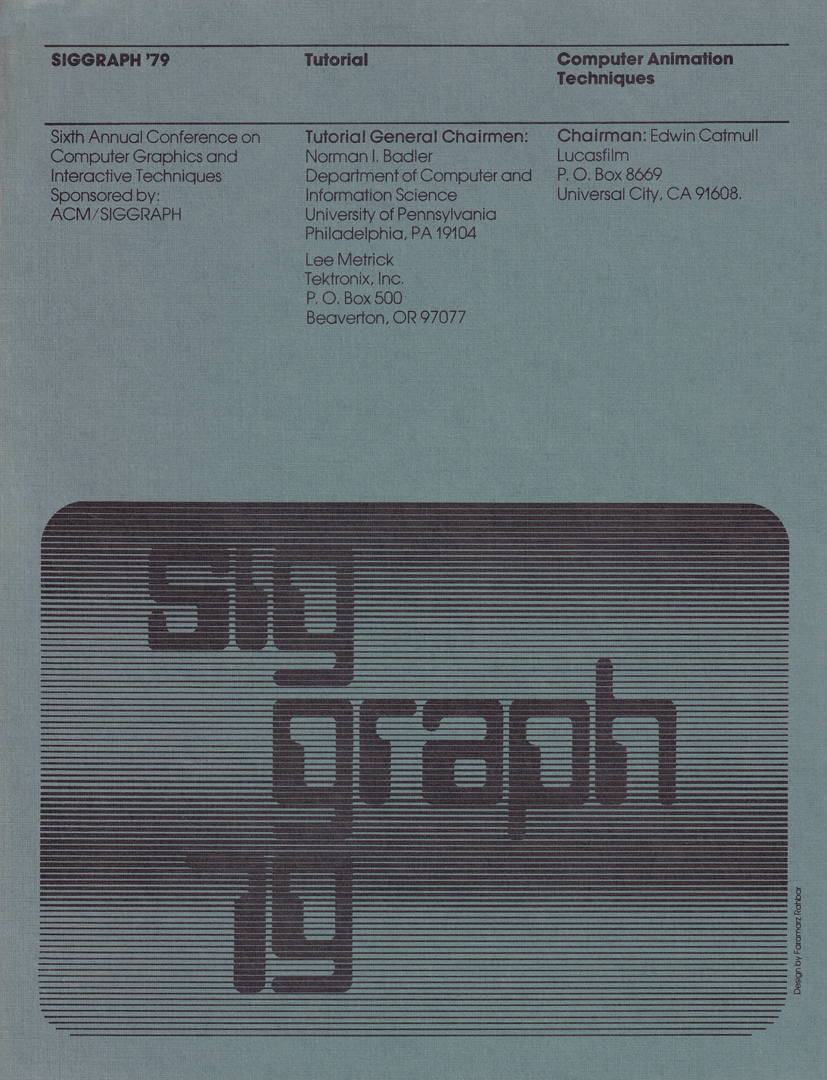“Computer Animation Techniques” Chaired by Edwin (Ed) Catmull
Conference:
Type(s):
Entry Number: 05
Title:
- Computer Animation Techniques
Session/Category Title: Also known as Animation Graphics in the Program
Course Organizer(s):
Presenter(s)/Author(s):
Abstract:
In the last few years several systems have been written for aiding in the conventional two dimensional animation process. The main purpose of these systems has been to let the computer produce missing drawings based on extreme drawings produced by animators. While there has been some success and a great deal of optimism, the promise of higher output and quality using a computer has not been realized. The transition from simple drawings optimized for use on the computer to the complicated and detailed drawings of quality conventional animation has been much harder than expected. The principle difficulty is that the animators drawings are really two dimensional projections of three dimensional characters as visualized in the animators head, hence information is lost, ie. one leg obscures another. The problem of making a program infer the original object from its projections is akin to extremely difficult artificial intelligence problems. Efforts to overcome this by drawing skeletons or increasing the number of overlays require more manual intervention thereby offsetting the gains of using the computer. One way to analyze an approach is to determine the average time required of an artist or operator at all stages of animation for every frame. A second problem not generally recognized is that a production animation system requires the management of hundreds of thousands of drawings, hence data base management techniques not normally found in experimental animation systems.
PDF:
Contents/Schedule PDF:
Contributed By:
- Mary Whitton / Maxine Brown
Location:
- Charles Babbage Institute Archives, University of Minnesota / In the collection of Maxine Brown




